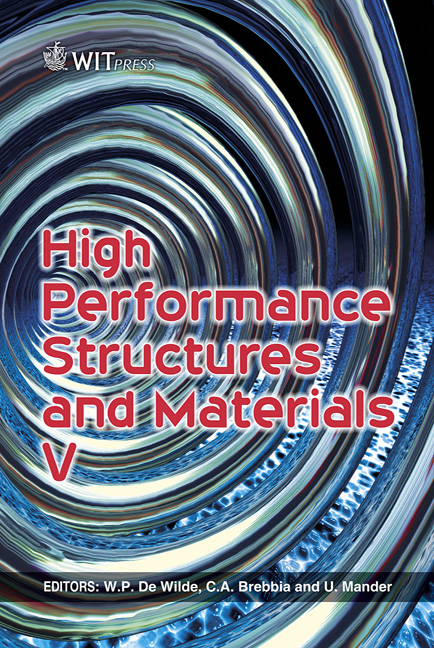Experimental Study On Dynamic Characteristics Of UHPC Pedestrian Cable Stayed Bridge
Price
Free (open access)
Transaction
Volume
112
Pages
11
Page Range
257 - 267
Published
2010
Size
1,295 kb
Paper DOI
10.2495/HPSM100241
Copyright
WIT Press
Author(s)
W. J. Chin, Y. J. Kim, E. S. Choi, J. Y. Kang & B. S. Kim
Abstract
The first pedestrian cable stayed bridge using ultra-high performance concrete (UHPC) has been designed and constructed in Korea. The 200MPa class UHPC is the fruit of the research performed by the Korea Institute of Construction Technology (KICT). UHPC is an innovative and ultra-high strength material with compressive strength larger than 180MPa that has been developed to secure the ductility and strength of the structural members. UHPC exhibits significantly improved tensile, flexural and shear strengths enabling to minimize the crosssectional depth. However, the significant autogenous shrinkage developed by UHPC is also potentially favouring the occurrence of initial cracking in the case of structures presenting complicated shapes. Considering such characteristics of UHPC, a pedestrian cable stayed bridge using UHPC has been erected inside the site of KICT. The dynamic characteristics of the precast UHPC deck were evaluated through performance tests on the first UHPC pedestrian cable-stayed bridge. Examination of the maximum acceleration and displacement responses at the ends of the girder is carried out according to the excitation method. The estimated natural frequency, and measured vertical displacements and accelerations are compared with the design criteria. The corresponding results verify the applicability of UHPC not only to pedestrian cable stayed bridge but also to roadway cable stayed bridge. Keywords: ultra high performance concrete, pedestrian cable stayed bridge, dynamic characteristics, hybrid concept.
Keywords
ultra high performance concrete, pedestrian cable stayed bridge, dynamic characteristics, hybrid concept





